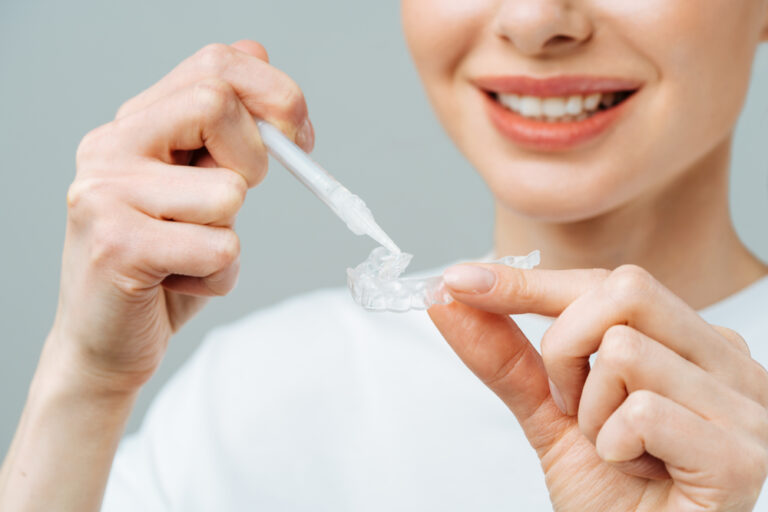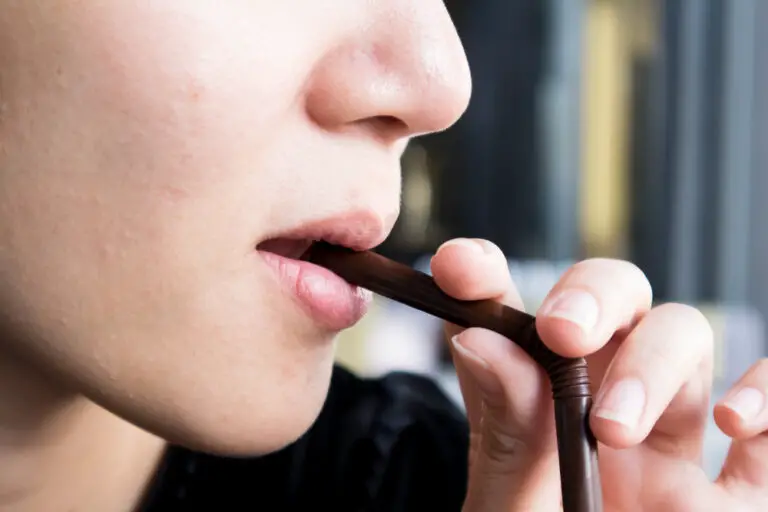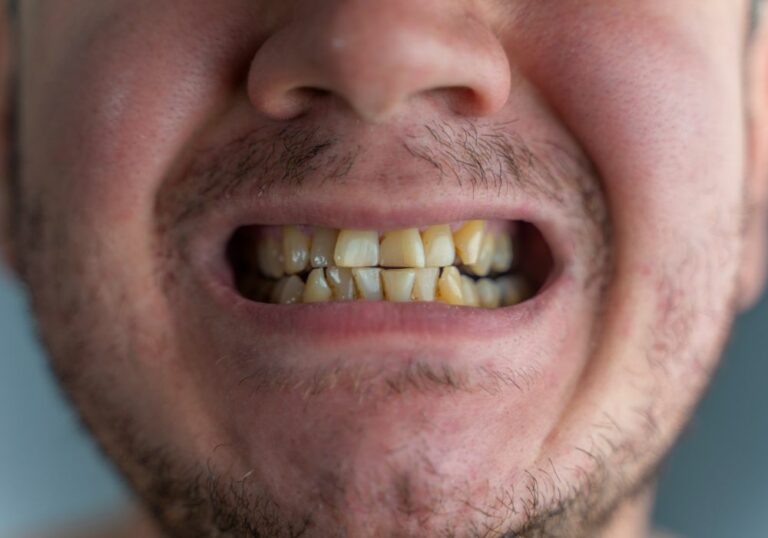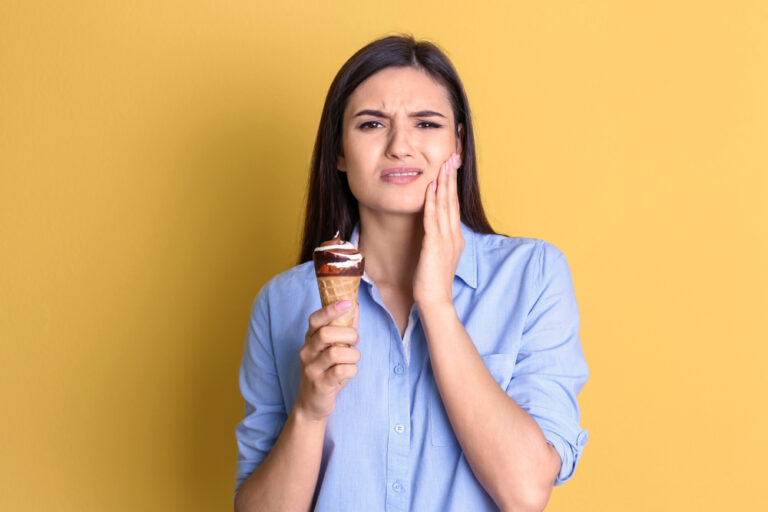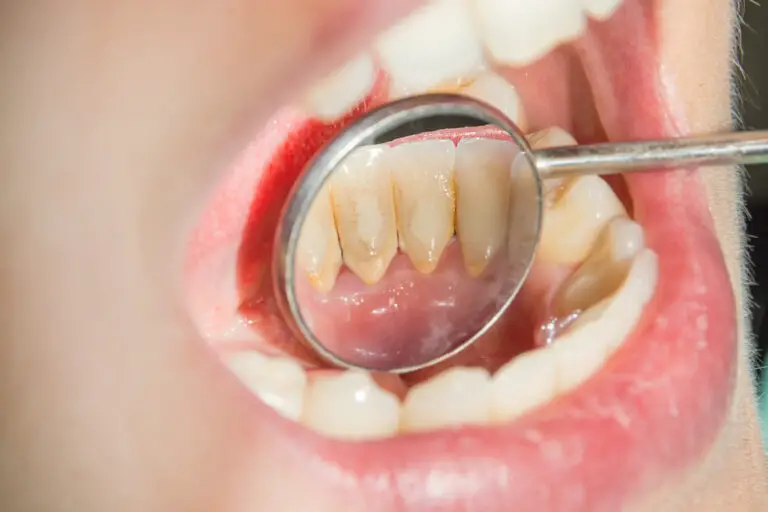Whether you are a dog person or not, you surely can recognize dachshunds: these small dogs have a very pronounced body shape with short legs and a long chest, which makes them truly special among dog breeds. It, combined with their character, is the reason why they are so popular around the world.
Despite their popularity, many people and dog owners still do not know about some of the basic info regarding these cute and funny-shaped animals. One example of that would be the topic “How many teeth do dachshunds have?”.
Well, it is time to put an end to that and teach people all about dachshunds’ teeth!
Basic Info About Dachshunds
Although images and bones of dachshund-like dogs can be dated all the way to the 1st century BC, the actual dachshund breed can be directly traced to the 15th century in Germany. Dachshunds are a combination of hounds and terriers, which were bred specifically for the purpose of chasing and hunting badgers.
In fact, the name of the breed is a combination of two German words: dachs which means badger, and hund, meaning dog. Thanks to the shape of their bodies, dachshunds can enter burrows of not only badgers but even smaller animals, which is not something other hunting dogs can brag about.
Badger dogs can be found in three coat types: smooth, longhaired, and wirehaired. Also, there are two bred sizes: standard dachshunds, which are between 8 and 9 inches tall and weigh 16 to 32 pounds, and mini dachshunds, which are at most 7 inches tall and weigh less than 11 pounds.
How Many Teeth Do Puppy Dachshunds Have?
If you are not a person who has a particular interest in dachshunds or dogs in general, you might be surprised to learn that dogs go through two sets of teeth just like humans do. The first set of teeth is called milk or deciduous teeth, and puppy dachshunds grow 28 teeth in that set.
These puppy teeth start erupting about three weeks in. Before that, baby dachshunds are toothless and feed on milk from their mother.
The first type of teeth to appear are incisors. During the fourth week or so, two pairs of upper and lower canines, for which not only dachshunds but all dogs are famous, join the party.
The last to emerge and complete the set are premolars. They usually erupt in week five or six. Baby dachshunds and other types of dogs do not have milk molars.
What If Not All Baby Teeth Fall Out?
Although it is not that common of an occurrence, some puppy dachshunds do not shed all baby teeth in time, which causes their mouth to look like it has a double set of teeth. In case your baby ends up suffering from this condition, you should take it to the veterinarian and have them do an extraction of the stubborn teeth.
There is only so much room in the dog’s mouth, so having extra teeth means there is no space for permanent teeth to grow properly, which could lead to issues regarding dental hygiene, such as periodontal diseases. It could also make it difficult for your puppy dachshund to perform one of its favorite activities – eating.
How Many Teeth Do Adult Dachshunds Have?
Deciduous teeth in dachshunds start to shed around the 12th week. Around that time, the permanent teeth slowly start appearing in the gums and pushing down the milk teeth. Twelve baby incisors are the first dominos to fall and get replaced by their permanent versions. Four canine teeth emerge between weeks 16 and 20.
Parallel to that, four deciduous premolars get replaced by adult premolars and four new ones are added. Finally, starting around the 5th month, the molars, of which there are four, appear on the scene.
Most dachshunds are done with shedding milk teeth and getting permanent ones at 6 months of age. At this point and during most of their life, they have a total of 42 teeth.
Signs That Dachshund’s Teeth Are Starting to Change
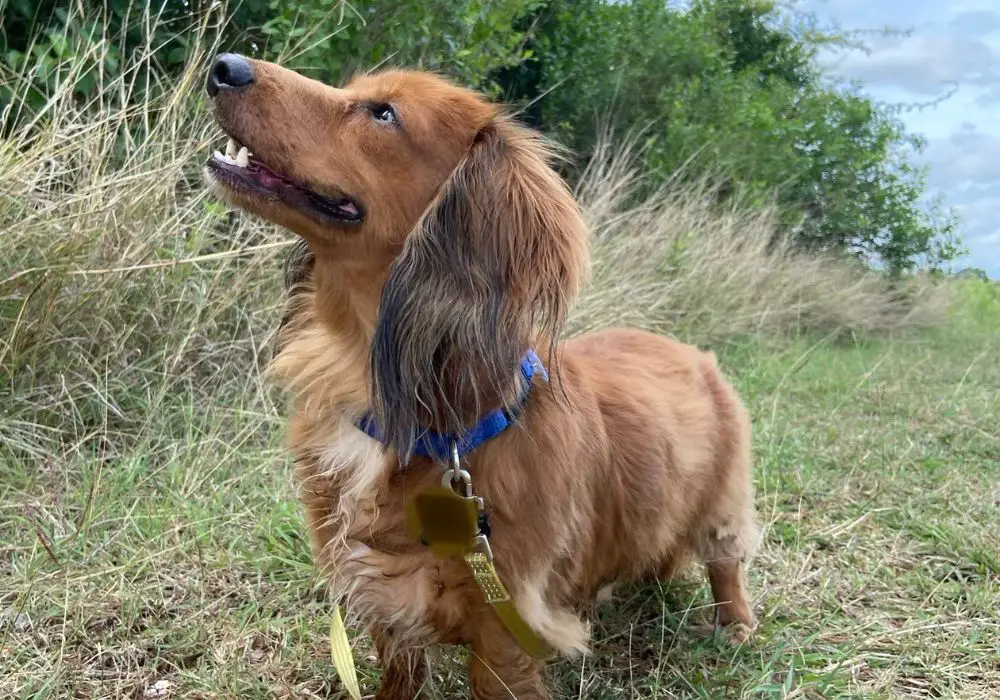
The change of teeth in these oblong and short animals with long ears is characterized by similar signs we see in humans. Many puppies become extremely restless, whine, or show resistance if you touch their jaw.
To alleviate these symptoms, puppy dachshunds often chew on hard or cold objects such as roots or branches. Those who spend a lot of time inside pick on furniture in the home, so it is not uncommon for a lot of things to end up getting destroyed during this stressful period.
In addition to increased chewing, dachshund puppies sleep poorly or stop eating dry food. If their gums are inflamed, the behavior might even worsen. In rare cases, puppies suffer more severe symptoms such as diarrhea or vomiting.
Tips to Help Dachshunds During Puppy Teething
Baby teeth that wobble and are about to fall out might bother dachshunds. That is why they try to speed up tooth shedding by biting everything they come across.
If you would like them to skip the furniture and other valuable things in the house or yard, use some of the following tips. Not only that, these tips will help the dogs go through this stage as painlessly as possible.
- Soak dry food in water or give your baby dachshund very soft food for puppies
- Give the badger dog some kind of object for it to chew, such as a dog chew toy
- Freeze food or chewing toys or refrigerate them so they cool down
- Pay attention to a balanced diet and nutrient intake (e.g., sufficient calcium)
When your badger dog is done with puppy teething, take it to the vet for a check-up. The veterinarian will determine whether the teeth have erupted properly and whether the jaw is straight. In the case of uneven teeth or jaws, the veterinarian will recommend the best treatment.
How do Dental Issues Occur?
When your dachshund eats, many bacteria from the food settle in its mouth. Over time, they accumulate in the mouth cavity, especially in the interdental area near the gums. Pieces of food often get stuck there after eating, on which the bacteria feed.
Bacteria with leftover food gradually form a sticky, white layer known as dental plaque. If it is not taken care of in time and removed, a brown-yellow calcified deposit called dental tartar or calculus appears and takes its place.
The hardened tartar negatively affects the gums and tissue surrounding the gums, due to which inflammation occurs. Lastly, bacteria might find their way to the tooth structure, which will result in caries.
What Happens If You Do Not Take Care of Your Dachshund’s Teeth?
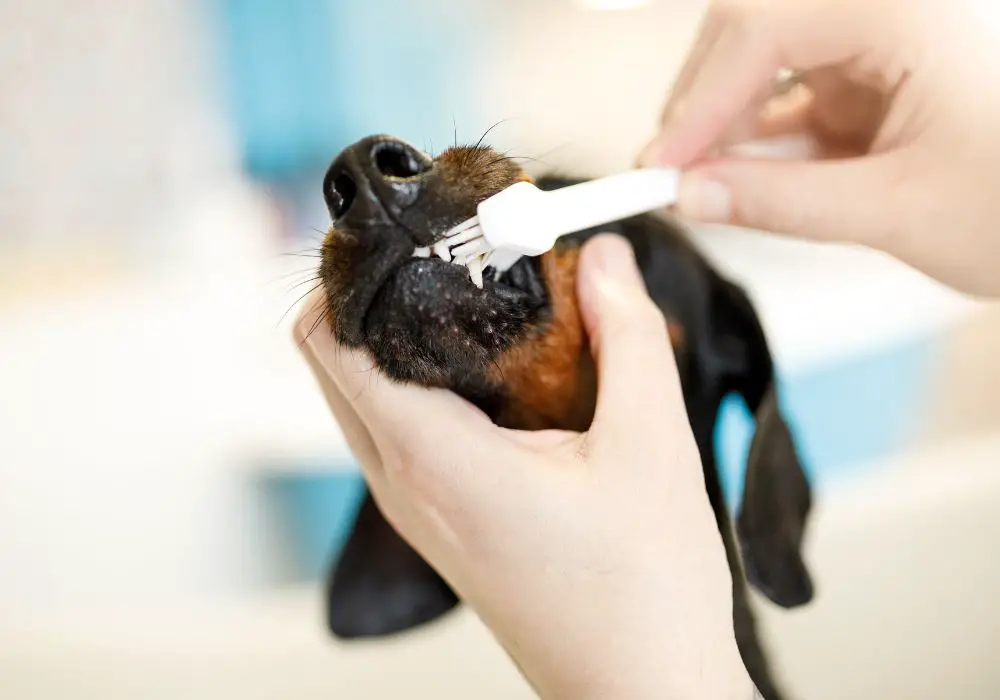
Dachshunds do not only use their teeth for chewing food but also for lifting and moving objects. Teeth are just as important to your pet as hands are to us. Since dachshund teeth have many functions, regular dental care is essential.
If you do not brush your pet’s teeth, dental tartar, caries, and similar dental issues might occur as a result. But how exactly do these problems affect your dog?
1. Pain
Inflammation of the gums (gingivitis) caused by plaque or calculus is very painful for dogs. The inflammation can spread far below the gums, causing the gums to separate and damage the periodontium.
2. Problems with Chewing
If your pet has a toothache, it can affect its eating behavior. For example, your dachshund might end up not wanting to eat or chewing food more carefully. If bacteria have managed to penetrate deeper tissues and lead to an abscess, this can also make chewing difficult.
3. Bad Breath
Decomposing food residues, bacteria in plaque or calculus create sulfur compounds, which are known to have an extremely unpleasant smell and cause bad breath in dogs.
4. Bacterial Infection
If the bacteria manage to enter your dog’s bloodstream, they can also lead to inflammation in other organs. Inflammation of the heart valves (endocarditis) or inflammation of the kidneys (nephritis) is often associated with dental problems. In the nightmare scenario, bacterial infections lead to blood poisoning or (sepsis), which is a life-threatening situation for your cute hunter dog.
If your dog has too much tartar, it might need to be removed by a vet.
Proper Dog Dental Care
If you want your pet to have healthy teeth, there is not much you need to do – regular toothbrushing and the occasional visit to the vet’s office.
1. Brushing Teeth
Brush your dachshund’s teeth regularly with a dog toothbrush. Brushing makes it easy to remove coarse food residues between the teeth. A special toothpaste for dogs helps them fight bad breath and makes brushing their teeth more pleasant for them.
If you brush your dog’s teeth regularly, you can avoid lengthy dental cleanings at the vet.
2. Regular Visits to the Vet
Despite adequate dental care, dachshund teeth might be prone to tartar buildup. If your pet is one of these dachshunds, you should regularly take it to the vet for a check-up and routine decalcification.
Conclusion
So, there’s that! Puppy dachshunds have 28 baby teeth, while adult ones grow 42 permanent teeth.
Besides that, in this article, we covered a lot of things regarding dachshund dental hygiene, such as what are the signs of teeth changing, how dental issues occur, and how to battle those issues best.
Is your dachshund currently going through the puppy teething phase? If you have any questions, feel free to share them with us!

